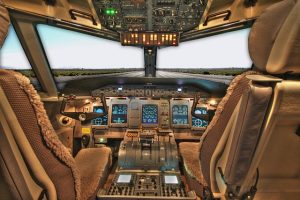
When researching avionics controls, you may come across the master switch. A typical cockpit has hundreds of avionics controls, with some commercial airliners boasting thousands of avionics controls. While each control has its own purpose, the master switch is arguably one of the most important.
Overview of the Master Switch
The master switch is essentially the on/off switch for an airplane’s avionics system. It controls the flow of electricity to the avionics controls. When turned on, the master switch allows electricity to flow freely to all of the avionics controls. When turned off, electricity will no longer flow to the avionics controls, thereby disabling the controls.
Where Is the Master Switch Located?
Different airplanes have the master switch in different places. In most airplanes, though, it’s located near the battery and alternator switches on the main avionics panel.
The master switch often consists of a toggle switch with an up and down position. Alternatively, some airplanes have a push-button master switch. There are also master switches that control separate electrical buses.
When Is the Master Switch Turned On?
Because it provides electricity for avionics controls, pilots will typically turn on the master switch once the engine is running. With that said, they will keep the master switch off when initially starting the engine, and they will turn off the master switch before shutting the engine down.
Why Airplanes Have a Master Switch
You might be wondering why airplanes have a master switch. Some people assume it’s for convenience. With a master switch, pilots can easily turn on and off all of the airplane’s avionics controls. Aside from convenience, though, the master switch helps to protect these otherwise sensitive controls from damage.
Avionics controls can sustain damage from power spikes. Even a small voltage increase can damage electronics, including avionics controls. Power spikes, of course, can occur during engine startup and shutdown. To protect avionics controls from power spikes, pilots can use the master switch. They can keep the master switch off when starting the engine, and pilots can turn off the master switch immediately before shutting down the engine.
In Conclusion
The master switch is more than just a convenient control — it’s a safeguard for the heart of an aircraft’s electronic systems. By managing the flow of power to all avionics, it protects sensitive components from voltage surges and ensures everything powers up in the right order.



